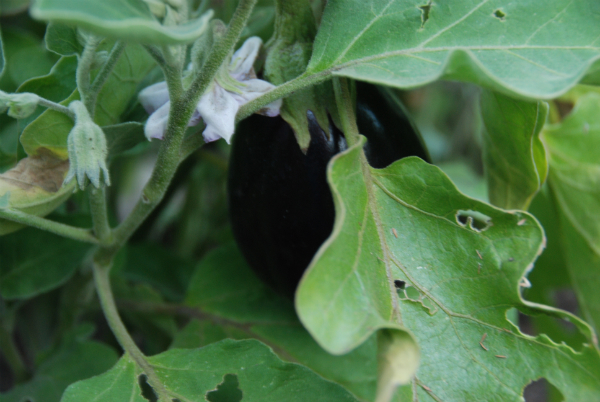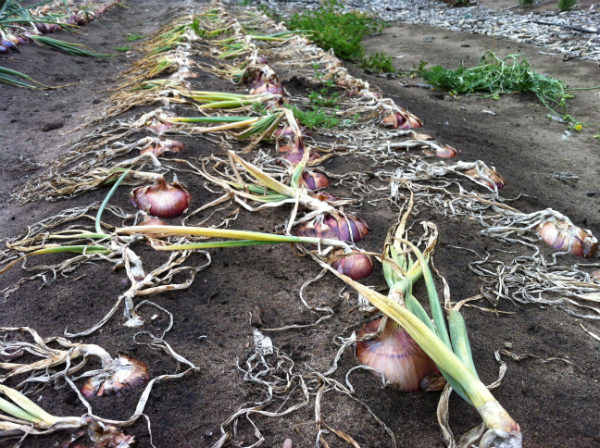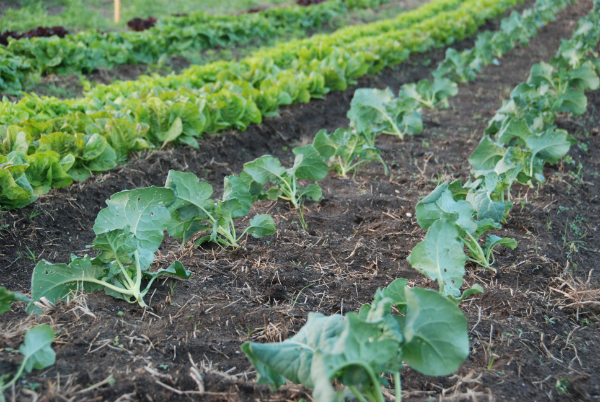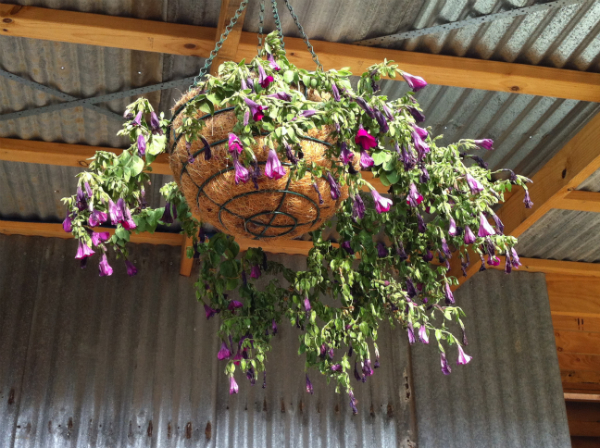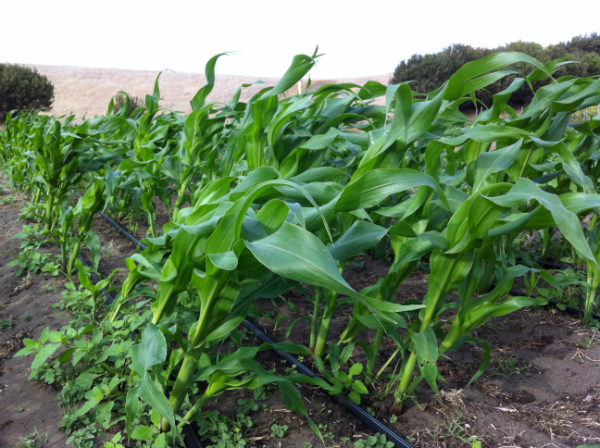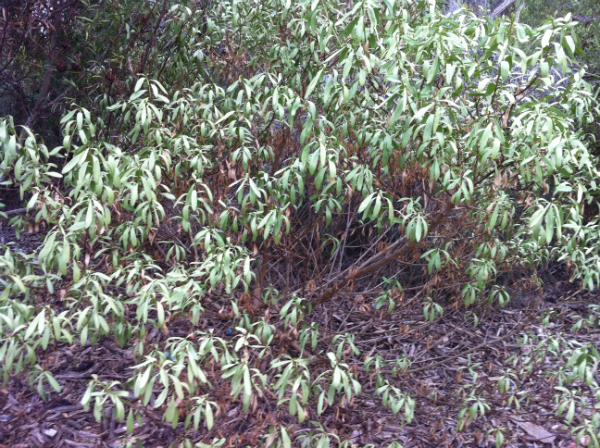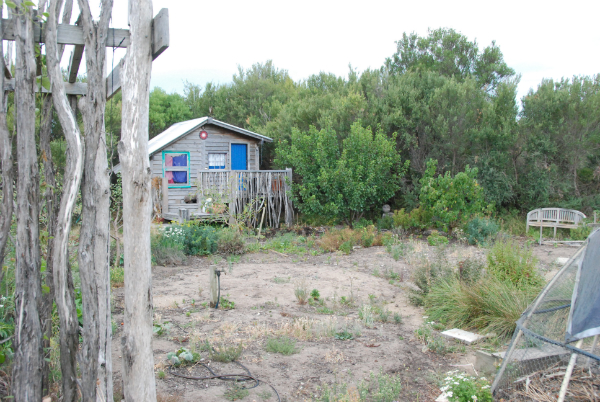Intense heat, no rain and what's growing in mid February
/January received record low rainfall all over Victoria. We recorded no rain on our farm for the month. Then there was a break...10mm...1 centimeter...on the 1 February. Although we have had some respites from the intense heat of early January and again last week, since the middle of December, we still have not had any substantial rain. Peter's constant attention to the rotation of irrigation has minimized the effects on the vegetables. While we have had some comments on the stringy, intense tasting celery, most of the vegetables damaged by the intense heat never make it into the weekly boxes so CSA members may not have noticed. We have not had many questions about the lack of sky water.
Our house tanks dried up this week. We have no town water here. And elsewhere on the farm the effects of lack of rain and another three days of temperatures between 33-36 degrees are showing. The strong winds (35-45km/hr), like those of last night and tonight, are intensifying the dry situation. A week ago when a thunderstorm with intense lightning rolled overhead at 4am, I was quite scared of a strike alighting the dry paddocks all around.
While rural Victorians are facing water restrictions "as severe as those in the 2009 drought..." (The Weekly Times, 20 Feb), and battling bushfires being fed by lightning and plenty of dry matter, those with town water have not had any water restrictions thus far this year. Reservoirs filled from previous wet seasons mute the effects of the dryness on most of the state. People on town water rely on several "entities" to control and distribute their water thus creating further distance between them and the source of this essential life giving substance. Water is a managed commodity.
One of our desires as a CSA is to reconnect people with their food, where their food is grown and how we as farmers are growing it. Although stories of old have portrayed the very real aspects of farming, the life and the death, the bumper crops and the droughts, the beauty of farm land and the ravage of insect plagues, in many ways I feel farming and the fruits of its "labour" have entered the postmodern age. Displays of beautiful, hole free, picture perfect (could farmers actually be the plastic surgeons of food...) fruit and vegetables line the shelves of conventional fruit and vegetable shops. They look so colourful, like a piece of artwork...but can you judge the book by its cover? And the variety sourced from all over the world minimize the effect weather has on local food supplies, and our direct relationship with it.
So in addition to pictures that accentuate all that we find beautiful on our farm, I thought I would show you the effects of intense heat, strong winds and lack of rain here. Farming really is the good, the bad and the ugly!
Every season is different and carries its own challenges. That is why I like farming - never the same! I really feel for those battling bushfires and struggling with dry tanks and dams.
We have written a post about Making Habitat - Living with Snakes.
Our CSA is entering the final week of the Summer Share and the Autumn Share has filled well with 80 families joining us for the next season. You can view photos of the weekly boxes by clicking the links to the weekly CSA newsletters. As farmers, we feel great gratitude to the local community who are supporting us. While the current drought may be affecting produce prices at the market, the CSA members have a set price for their box of seasonal vegetables and fruit. We have been able to share our bumper crop of nectarines and for the past two weeks, boxes received melons and watermelon in addition to vegetables. Many of the members are delighting in unpacking their weekly boxes and feel inspired to cook with their nutrient dense, fresh food. As for us, this model of selling our food allows us more time to spend on our growing practices. The effects of crop failures have also been minimized as the variety that we are growing have kept the boxes full. We are excited about growing our farm this Autumn with the construction of moveable greenhouses and chicken tractors.
We are happy to have found a full-time employee to work with us. Bryn Roberts and his wife Adrianne have made a sea change. Bryn is excited about food and is enjoying learning more about growing it. We have also formalized our internship programs and are looking for interns for Autumn, Winter, Spring and Summer. We hope that we can share techniques of intense market gardening and how we are organising and running our CSA with other aspiring farmers.
We are unsure why an old newsletter was resent last week and why our CSA newsletter was sent to everyone. We use a service to manage our mailing list and "pick up" our posts for emailing. Sorry for any inbox congestion.
Several climatologists from the Bureau of Meteorology got together and wrote an article entitled "What's Causing Australian's Heat Wave". Well worth a read. We may be in for more months of this sort of weather.
And for all of you growing your own, with excess to trade, there is a home harvest exchange program on the Peninsula. Participants simply donate their fresh fruit, vegetables, jams, eggs and other produce, and help themselves to the offerings of others. A bunch of rhubarb may be exchanged for a pot of marmalade. No money changes hands during the swap and there is usually no measurement of produce when swapping. You don’t even need to barter!
1st Saturday of the month, 3 – 4 pm The Briars, 450 Nepean Hwy, Mount Martha
3rd Saturday of the month, 2 - 3 pm Dig It, Mornington Community Garden, Mitchell St, Mornington
Last Friday of the month, 3.30 – 5.30 pm during School Term Mt Eliza Secondary College, Canadian Bay Rd, Mt Eliza
While no-one is ‘in charge’ of co-ordinating or setting up Home Harvest Exchanges, Paula from the Local Home Harvest Exchange network is happy to help with advice. Contact hhedromana@gmail.com
We have really enjoyed growing food for the Summer Share and are looking forward to continuing through into the Autumn! Hoping for rain...





